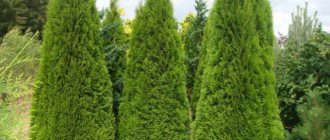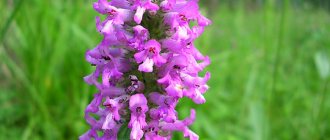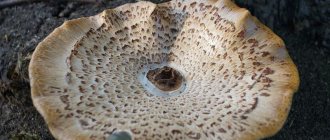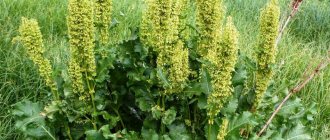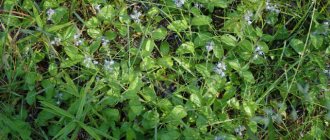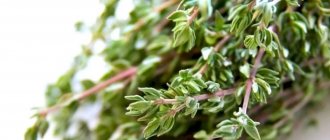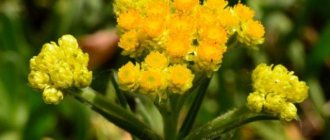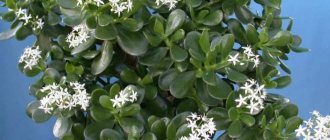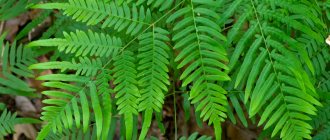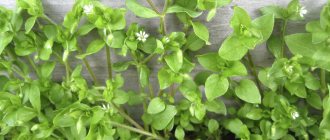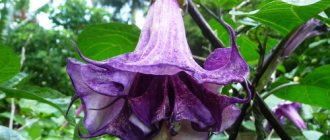Shchitovnik care at home
1.1.How it reproduces
Plants can be divided in February and March when transplanting. Spores that are sown in the spring on the surface of a loose nutrient substrate. The crops are covered with glass or a plastic cap to maintain humidity. Shield grass is able to spread by short creeping rhizomes.
1.2.Caring for shieldweed
Promptly remove old, drooping fronds at the base of the rosette to maintain the attractive appearance of the fern.
1.4.Soil for shieldweed
The shield plant is easy to grow in slightly acidic soil rich in organic matter. A mixture of equal parts of garden soil and peat with the addition of coarse river sand to improve drainage is suitable.
Moderate - warm content, shield plant does not like heat. Tolerates short-term temperature drops of up to 5° C.
1.7. Fertilizer
During the period of active growth, feed every 2 weeks with fertilizers at half strength. He loves organic fertilizers very much.
1.9.Spraying
Maintain high humidity by placing the fern container on a tray of damp pebbles or using a room humidifier. Spraying can be done. Provide the plant with good air movement without cold drafts.
1.10.Wiring
Needs a lot of water during the growing season. Reduce watering in winter, but do not dry out the earthen ball under any circumstances - the soil should remain evenly moist all year round. For irrigation, use softened water at room temperature - for example, bottled, rain, melted water. To reduce hardness, you can add regular baking soda to tap water - a teaspoon per 2 liters of water.
1.11.Transplanting shieldweed
In the spring, as it grows or if it is necessary to change the soil. Adult plants are replanted every 2-3 years.
Purpose. A fairly large plant for large spaces.
Note.
Hydroponics.
Contraindications to the use of medicinal plants
Fern is a poisonous plant, so its use is only possible under the strict supervision of a doctor. It is considered poisonous due to the presence in the chemical composition of the plant of the substance “raw filicin”, which is found, for example, in the form of odorous fern. If you do not follow the dosage of the drug, acute poisoning is possible. Symptoms and consequences of poisoning are expressed in:
- headaches;
- nausea and vomiting;
- feeling of weakness;
- convulsions;
- a sharp decrease in blood pressure;
- respiratory depression;
- decreased cardiac activity;
- dizziness;
- lethal outcome.
Strict contraindications for use are pregnancy, lactation and children under 12 years of age.
People who have hypersensitivity to some components of the fern, as well as those prone to allergic reactions, should be treated with caution. The use of this medicinal plant is contraindicated for persons with kidney and liver disorders, stomach and duodenal ulcers
When suffering from tuberculosis and malaria.
Male fern
or
Male shield plant
(Dryopteris filix-mas) is a perennial herbaceous spore plant from the family of true ferns (Polypodiaceae), one of the most common species of ferns.
The plant has a powerful, thick, obliquely growing rhizome, with numerous thin roots. There is no aboveground stem. The rhizome bears a bunch of pinnately dissected leaves with pinnately divided lobes.
The leaves are large, up to 1 or more meters in length. Their plate is dark green, elliptical-oblong, doubly pinnately dissected. The leaf lobes of the first order are lanceolate-linear, deeply divided and pinnate with oblong obtuse lobes of the second order. The second-order lobes have jagged edges. Their teeth are sharp or blunt. The leaves are on short petioles, together with the main nerve, densely covered with brownish scales.
By the end of summer, sporangia develop on the underside of the leaves. The sporangia are collected in groups (sori), more or less round, always with noticeable kidney-shaped covers, and are located on the sides of the midrib in two rows.
Chemical composition
Shield fern is a genus of perennial ferns of the Shield family , which includes about 150 species. Plants of this genus are the largest among their relatives. A long bunch of feathery leaves grows directly from a strong short rhizome, covered with whole scales. Bright green elongated leaves (fronds) reach a length of one meter.
The fronds of this variety of ferns have a very complex feathery shape and look like strange plants in themselves. The shape of the leaf resembles the shield of an ancient knight, from which the Slavic name of the plant comes.
Ferns do not bloom, they reproduce by spores. Representatives of the Shchitovnikov family grow very slowly; only in the third year of life can they be seen in all their glory. Other names: magpietooth, devil's beard.
Of all the plants of the genus, the male shield has the most pronounced medicinal properties. It is its rhizomes that are used for medicinal purposes.
The following were found in the composition of medicinal raw materials:
- phenolic compounds;
- fluroglucinol derivatives;
- filixinic and flavospidinic acids;
- tannins and bitter substances;
- starch;
- bitterness.
Composition and application
The rhizomes of fern (Rhizoma Filicis maris) are used for medicinal purposes. The medicinal properties of the plant have been known since ancient times. The fern was already described by Dioscorides, Pliny and, in more detail, by the Tajik scientist and physician Avicenna in the 11th century.
Medicines are obtained from the rhizomes in the form of an extract or neogalene preparation of filicilene - a means of combating tapeworms, hookworms and other worms in humans, as well as in sheep and cattle.
The most studied substances are: fern acid, flavaspidic acid, albaspidin and aspidinol, which are derivatives of phloroglucinol and its secondary and tertiary homologues. The active principle of the plant is considered to be filmarone, which breaks down into filicin (phylixic acid) and aspidinol.
According to some authors, phylixic acid substances are predominantly muscle poisons, leading to paralysis of the muscle tissue of worms. According to others, these substances turn out to be poisons for any protoplasm, and they exhibit particular toxicity towards the muscle cells of mollusks and worms, which explains the anthelmintic effect of the fern rhizome.
the needle fern is often prepared and used
(Dryopteris spinulosa), which is somewhat similar in appearance to the male one. Research has established that the rhizomes of needle and male ferns are completely equivalent in their properties and filicin content.
Needle shield fern is one of the most common ferns in Russia. It grows in mixed and coniferous forests of the European part of Russia, in Siberia, and the Caucasus.
Botanically, it is very close to the male shieldweed (belongs to the same genus), externally differing from the latter in having double-pinnate leaves, in which the second-order segments are pinnately dissected with teeth elongated into a soft needle (in the male shieldweed, the leaves are twice pinnately dissected, and segments of the second order do not end needle-like). The rhizomes of the needle shield plant are usually smaller in size than the rhizomes of the male plant.
Male fern, useful and dangerous
Content:
Hello dear reader!
Actually, the correct name of the fern is male shield fern. And they belong to the family Aspleniaceae, the order Cyathaeaceae, the class of polypodiopsids from the fern division. Phew! At the same time, this fern is still better known as the male fern.
The history of the name is briefly as follows. There are two widespread, similar in appearance, close (but not related!) ferns. Even the Romans called one of them, with more refined outlines, female fern - filix-femina. The second, respectively, is a male fern – filix-mas.
These names have been preserved. Although it makes no sense to talk about a “male” or “female” plant in relation to ferns. After all, they reproduce by spores. Therefore, what kind of “monoecy” or “dioecy” can we talk about?
The historical names of ferns are reflected in their species names - both Russian and Latin. The male shieldweed in Latin is called Dryopteris filix-mas, and the female shieldweed is called Athyrium filix-femina.
Useful properties of fern
The medicinal properties of the root are due to the content of healing substances in it. There are alkaloids, starch, essential oils, flavonoids, tannins, fat, hydrocyanic acid, riboflavin, carotene, tocopherol and nicotinic acid.
The fern is used in cooking and is included in the food of the taiga inhabitants of the Far East, Japan and Korea. The use of this plant forms the correct skeleton, improves the nervous system, normalizes metabolism in the body and increases performance.
Use in medical and folk practice also provides its advantageous medicinal properties. Not all types of fern have medicinal effects. For example, the red fern is suitable for decorating garden areas, but the male fern or fragrant shield fern has a medicinal effect. They have an antispasmodic, antibacterial, disinfectant, tonic and calming effect.
Fern cleanses the body of toxins and harmful substances and helps strengthen the immune system. If a person experiences skin rashes, long-term non-healing skin lesions, eczema, rheumatism, frequent headaches and chronic constipation, then the use of this plant will give positive results and improve the patient’s well-being. Shield also improves and normalizes the functioning of the cardiovascular system, but at the same time it has some contraindications in some cases of heart disease.
Reproduction
Possible in several ways:
Disputes
Shield spores develop on the back surface of the leaves. After ripening, you need to cut them and dry them, laying them out on paper. Fill the boxes with a mixture of peat, sand and leaf soil in a ratio of 2:1:1.
Spread the spores in an even layer over the surface of the substrate and moisten with a spray bottle. Do not fill it with soil!
Cover the container with polyethylene film or thin glass and keep warm and humid. Germination begins after 5-6 weeks. After which the greenhouse is removed.
Dividing the bush
The method is faster and less labor-intensive. During transplantation, separate part of the rhizome with leaves and plant in a separate pot.
Tubers
Many species grow daughter tubers or tendrils, which can be separated from the plant and buried separately to a depth of 7 to 13 cm in the ground. Water thoroughly and keep in constant moisture.
By shoots
Shield insects can throw out daughter shoots (brood buds). They appear on the leaves and begin to grow. Subsequently, they can be separated from the fronds, placed in moistened peat or moss and covered with half a plastic bottle or glass jar. Rooting occurs in a couple of weeks, then the seedling is moved to normal soil.
Fern (shield plant) description of appearance
Photo: Pixabay
The shield plant has dark green leaves. They are oblong-lanceolate, doubly pinnately dissected. The fern leaf is dissected into leaflets with jagged edges; closer to the top of the leaf they become shorter and smaller.
The leaf roots are thick and covered with scales. The same brownish scales adorn the main vein on the underside of the leaf.
The leaves of the shield plant differ in origin from the leaves of other seed plants. They arose in the process of evolution: entire shoots of the plant grew together and became denser. In botany, the leaves of the shield plant are called fronds.
In early spring, the fronds resemble young leaves rolled into a snail. They unfurl and begin to grow like stems all summer.
The rhizome of the plant is powerful, cylindrical, dark brown in color. The lowermost parts of the old petioled leaves cover the rhizome, which is why it has a tuberous appearance.
Root length is from 10 to 40 centimeters. From its lower side there are many fine roots, and the upper end ends in a bunch of leaves.
Economic significance and application edit edit code
Male shieldweed is a constant subject of collection - as a medicinal raw material, an ornamental garden plant and a component for growing greenhouse epiphytes (a component of the epiphytic substrate, the so-called fern roots).
Back in the middle of the 20th century, the rhizomes of the shield plant were widely used for tanning leather and dyeing it yellow. Now, however, only rare artisan tanners who adhere to old natural recipes use fern for these purposes.
An extract from autumn leaves is suitable for stimulating the growth of yeast in their production.
The rhizomes are poisonous to pigs and sheep if eaten in large quantities.
Medicinal use
The male shield plant has been widely known for a very long time as a medicinal plant. The medicinal properties of this plant were already known to doctors of ancient times and the Middle Ages. In particular, it is repeatedly mentioned in the works of Dioscorides and Pliny.
The plant is poisonous (especially the rhizome), the possibility of poisoning cannot be ruled out! The rhizome has a specific smell and a sweetish-tart taste.
The rhizome (lat. Rhizoma Filicis maris) is used as a medicinal raw material, which is dug up in the fall, the soil is shaken off, cleared of roots and leaves and dried in the shade, in well-ventilated areas or in dryers at a temperature not exceeding 40 °C. The yield of rhizomes is up to 5 c/ha.
The rhizomes contain 7-8% tannins, phloroglucinol derivatives, flavonoids and essential oil. The main active ingredients of the rhizome of male fern are phenolic compounds consisting of phloroglucides of varying degrees of complexity - monomeric, dimeric and trimeric derivatives of phloroglucinol: filmarone (aspidinophylline), filicin, flavaspidic acid, aspidinol and others, which have a pronounced anthelmintic effect. These substances in the rhizome extract cause paralysis of the muscles of tapeworms and worms, which are then removed from the body using a laxative. This method of anthelmintic therapy is currently considered outdated. In the European Pharmacopoeia, this drug is mainly used in veterinary medicine. In the pharmaceutical industry, medicinal raw materials are used to prepare drugs against parasitic worms. As an anthelmintic, male shieldweed was officially included in the State Pharmacopoeia of the USSR. The drug Filixan was obtained from freshly collected rhizomes.
However, the poisons contained in the rhizomes of the male fern are toxic not only to the smooth muscles of parasitic worms, but also to the central nervous system and the human heart. When a threshold toxic dose is introduced into the blood of experimental warm-blooded animals (or after absorption into the blood from the intestines), convulsions soon begin, and subsequently paralysis of the central nervous system and heart. It is precisely because of these toxic properties that male shield preparations are contraindicated for heart disease, liver and kidney diseases, gastric and duodenal ulcers, as well as pregnancy, exhaustion and anemia. In addition, when using male fern preparations (half an hour after administration), it is necessary to give only a saline laxative (for example, Epsom salts), but not castor oil, which sharply increases absorption in the intestinal area and thus can provoke severe poisoning.
The use of shieldweed in folk medicine is much wider than in official medicine. However, it must be remembered that the rhizome of this fern is poisonous and, if self-medicated, can cause acute poisoning, expressed in convulsions, confusion, increased heart rate and vomiting.
Spores in traditional Chinese medicine are used for hematuria and diseases of the genitourinary organs.
Male fern (Dryopteris fílix-mas L.)
Syn: scutellum, male scutum, medicinal scutum, devil's beard.
Male fern is a perennial spore plant with a thick rhizome used for medicinal purposes. Preparations based on it are an effective remedy for worms.
Table of contents
In medicine
Preparations from the rhizomes of the male fern are used to treat tapeworm infestations. They are effective against taeniasis - infection with pork or bovine tapeworm, hymenolepidosis - infection with dwarf tapeworm and diphyllobothriasis - infection with fish or broad tapeworm and small tapeworms. Shield fern is suitable for controlling helminths in both humans and animals. The root of the male fern (Filicis maris) is used medicinally. Dry extract “Filixan” and thick, viscous “Essential Male Fern Extract” are made from it, as well as homeopathic preparations “Helminton” and “Antihelmin”.
Contraindications and side effects
The plant is poisonous, so it must be used strictly as prescribed by a doctor, following all instructions. If there is an error in dosage, stomach pain appears, salivation increases, nausea appears, followed by vomiting and diarrhea, body temperature rises, pulse quickens, and shortness of breath occurs. In extreme cases, clouding of consciousness up to acute psychosis and delirium is possible. A sign of poisoning is miosis - constriction of the pupils; over time, hemoglobinuria, hemolysis, and jaundice are observed. Shield poisoning can lead to death from cardiac arrest. Preparations from this plant are contraindicated for persons under 18 years of age, pregnant women, exhausted people, heart failure, angina pectoris, acute heart, kidney or liver diseases, low blood pressure, gastric and duodenal ulcers.
Article on the topic: Homemade (cultivated) turmeric - beneficial properties, description
In gardening
Male shieldweed is often used in landscaping parks and garden plots. Gardeners have developed more than a hundred varieties, some of which even botanists have difficulty recognizing as the original fern. What unites them all is thick, bright, decorative foliage.
Classification
Male fern or male shield fern belongs to the Aspleniaceae or Kostentsov family (lat. Aspleniales), subfamily of shield ferns (lat. Dryopteridaceae), genus Shield fern (lat. Dryopteris). There are about 150 other different perennial ferns in this genus.
Botanical description
Spreading
This plant chooses moist soils of coniferous, broad-leaved and mixed forests, but is also found on mountain slopes, for example, alpine or well-warmed by the sun, protected from the wind, arctic. It can be observed in forest clearings, along railways, and at the site of forest fires. The male fern grows in all countries of the temperate climate zone. It can be seen both in Mexico and Greenland. In Russia, the largest habitats of the male shieldweed are in the Krasnodar Territory and in the south of Western Siberia.
Procurement of raw materials
The rhizomes of male shieldweed are dug up in early spring, before the development of the above-ground part, or in early autumn. They are cleaned of soil, thin roots, dead parts, leaves, the lower, rotten part is removed, guided by the “constriction” line, and cut into pieces. The chopped raw materials can be immediately processed fresh, from which male fern extract is prepared, or it can be dried either in special dryers or in well-ventilated areas, at a temperature not exceeding 40°C. The roots have a sweet, astringent taste that soon becomes unpleasant. The smell is light, unobtrusive. The finished raw material can be stored for up to a year, but over time its antihelminthic properties weaken.
Chemical composition
Pharmacological properties
The beneficial properties of male fern, as well as its toxicity, are associated with the presence of phloroglucinol derivatives and their breakdown products in the rhizome. These substances are a powerful poison that paralyzes the muscle tissue of worms. A few days before taking the drugs, the patient should be switched to a low-fat diet. Before giving the medicine, cleanse the body with an enema and laxative. Preparations based on shield fern are taken on an empty stomach, and after taking them, drink a laxative again. Since the poisons in ferns paralyze not only worms, but can also have a toxic effect on the human central nervous system and disrupt the functioning of the heart, in most countries of the world such treatment is considered outdated; there are new, safer methods of combating helminthic infestations.
Having found safer remedies for worms, scientists continue to study the beneficial properties of shieldweed. It was found that male fern phloroglucides are able to inhibit the process of induction of malignant cells, flavonoids have immunostimulating and antiviral properties. Experiments with drugs based on shieldweed continue and, perhaps, the plant will soon become the basis for new drugs with new properties other than anthelmintics.
Use in folk medicine
Historical reference
The beneficial properties of fern were discovered back in ancient times. Dioscorides wrote about them, and Pliny the Elder, Ibn Sina (Avicenna), and Theophrastus mentioned them in their works. The shield fern received the specific epithet “male” from the ancient Romans. They believed that the fern also had “female” plants, but in fact, the more delicate, with small feathery leaves, the female fern or nomadic fern (Athyrium fílix-femina) is a representative of another genus of the subfamily Shchitovnikov. It is interesting to note that the rhizomes of the female fern contain all the same substances that are responsible for the toxicity of the male fern, but in a smaller, sort of “female” concentration.
In the Middle Ages, knowledge about shieldweed as an anthelmintic agent was not so much lost as it was questioned. The fact is that dried fern rhizomes lose their toxic properties over time and, if you don’t know this, it may seem that the medicine is not effective. On the other hand, ignorance of the correct doses often led to poisoning. Preparations from male fern have practically ceased to be used. It got to the point that the French king, Louis XVI, paid an incredible sum at that time of 18 thousand livres to the widow of the Swiss doctor Kuffes for the secret of his family remedy for worms. Imagine the surprise of the royal physicians when they learned that such an effective remedy contained shieldweed, which they had long recognized as useless.
The famous Slavic belief about the “fiery flower” that illuminates treasures on the night of Ivan Kupala, which is reflected in many literary works, both folklore and original, is associated specifically with the shield plant. Myths and legends endowed the flower, which appears only for a moment, with amazing power. He had to not only show where the wealth was hidden, but also open all the locks on the way to it, make its owner a master of spirits, and teach him to understand the language of animals and birds. Different beliefs list the different opportunities granted by the shield flower, but all seekers of good luck are warned - the plant is guarded by evil spirits, ready not only to take the lives of brave men, but also to doom their souls to eternal torment. Modern scientists, of course, know that the fern does not bloom, but knowledge does not prevent the existence of a wonderful legend.
Distribution and habitat edit edit code
The male shield plant can be fully called a cosmopolitan among plants. It has mastered the widest growing areas - it can be found from Greenland and Scandinavia to Mexico and the Mediterranean. On the territory of Russia, its range is no less wide: it can be found from the Kola Peninsula in the north of the European part to the mountain forest regions of the Caucasus, the Urals, the Urals and southern Siberia. The male shield plant is also found in Central Asia. In the mountains, it settles in beech, spruce, fir and juniper forests, rising in places to the alpine and mountain-tundra belts. It can even grow in the Arctic - on southern slopes protected from the wind and warmed up in summer, covered in winter with a thick snow cover. However, the main part of its range is located in the forest zone, where it is found in coniferous, mixed and deciduous forests.
In forests of a temperate climate zone (for example, central Russia or the North-West) on moist, slightly acidic soils in the grass cover of spruce, fir and broad-leaved forests, the male shield often forms dense communities, displacing almost all other plants from the favorable territory. However, single specimens are also not rare. The favorite habitat for male shieldweed is moderately swampy (or even semi-dry) fires, railroad exclusion zones, clearings, where, in conditions of reduced competition, you can find particularly extensive thickets of this plant.
However, despite its wide and almost ubiquitous distribution, the male shield plant is included in the regional Red Books of Russia (for example, the Murmansk region and Buryatia) and Ukraine. In the Donbass it is found in the forests of the Slavyansky and Krasnolimansky districts of Donetsk, as well as in the floodplains of the Donets in the Lugansk regions. In Buryatia, the species was found on the southern coast of Lake Baikal in the deltas of the Snezhnaya, Vydrinnaya, Pereemnaya rivers and in the vicinity of Vydrino station. To the east of the coast of Lake Baikal it becomes even more rare, almost never found. The population decline is primarily due to the vulnerability of already established plant communities that do not tolerate deforestation and any human intrusion into their environment. But not only the community as a whole, but also each plant individually has quite sensitive rhizomes that are easily damaged, but very difficult to restore.
Plant habitat
Male fern grows in spruce and oak forests, in places rich in humus. It can be found in mountain beech forests in the Caucasus, in the spruce taiga of Siberia and cedar forests in the Far East.
The plant has spread throughout the CIS countries. It occupied vast areas in Ukraine, in the Moscow and Tver regions. You can also find ferns in the garden.
Harvesting and storage of shieldweed
The rhizome of the plant is used as a raw material for the preparation of preparations. Harvesting of shieldweed occurs throughout September and October. You should not completely dig up all the plants in a forest area so that the remaining individuals can restore their population. It is recommended to leave about a quarter of the total number of plants. Please note that repeated procurement of raw materials in this area will be possible after five or even ten years.
After removing the shield rhizome from the soil, it must be very well cleaned of soil residues, small roots, green leaves, as well as the remains of dead petioles. To speed up the drying process of the rhizomes, they can be cut into pieces from 1.5 cm to 6 cm in length and from 1 cm to 3 cm in width. After this, the rhizomes are placed in special dryers or shaded areas with good ventilation (for example, in attics or under sheds). After this process, the finished raw materials should lose about a third of the weight of fresh preparations.
You can store finished raw materials in linen bags in a dry room for no more than one year.
Procurement of raw materials
Ferns can only be collected from the same place after 20 years. When starting harvesting, you should leave 30% of untouched specimens of the shield plant for propagation.
Fern root should be harvested in the fall. The roots can be dug up with a shovel, thoroughly shaken off the ground and washed in running water.
You need to cut off the leaves from the root and clear it of small roots. Then dry the raw materials, then dry them in the shade in the air or in a dryer at a temperature of 40 °C. To make the root dry faster, large rhizomes need to be cut lengthwise and crosswise.
Raw materials should be stored in tight packaging for a year. When stored for a long time, the root loses its medicinal properties, so it is recommended to replenish stocks annually.
Main varieties
As mentioned above, there are many varieties of shieldweed. However, the following five varieties are the most popular and widespread.
Male
The male fern grows primarily in the forest belt of Eurasia. This plant crop prefers deciduous forests with soil rich in nutrients. This plant does best in the shade.
The foliage of the male fern is rough. The leaf shape is oblong. This species is distinguished by a specific odor of the leaves, which is not characteristic of other varieties of shieldweed. The rhizome or bulb of the male fern is large.
Needle
This variety is most common in the Caucasus, as well as in western Siberia. In addition, needle fern bulbs can be purchased in South America, since this plant also takes root well here.
The rhizome is scaly. However, the main feature is the bare leaf blade underneath, which is characteristic only of this plant. In height, such a crop can reach about 80 cm.
Field
Prefers acidic soils. It is best to plant such a plant crop near swamps and wet fields. This species of shield insect does not tolerate dehydration.
The stems of field fern are long. The leaves are large and feathery. The root is also quite large. A characteristic feature and distinctive feature of this species is the complex structure of the foliage.
Comb
It grows in many European countries, as well as in Siberia. Prefers soils in areas of swampy forests and moss swamps. Characterized by rich dark green foliage. The leaves are comb-shaped and can reach 60 cm in length.
Odorous
This plant crop lives in Siberia, China and North America. Grows mainly in rocky areas. The leaves tolerate even severe frosts well. The foliage smells very nice. The height of an adult plant is about 30 cm.
3.Varieties:
3.1. Chartres or needle-shaped shieldweed - Dryopteris carthusiana
An evergreen fern, 60 to 90 cm high, with delicate, lacy, oblong triangular fronds. The leaves are glossy, finely toothed, oblong-oval, arranged alternately on the fronds. In the warm season, sporangia appear on the underside of the leaves, arranged in 2 even rows. When ripe, the sporangia darken, some becoming almost black. The petioles of the frond are thin, curved, and green. The rhizome is thick and superficial.
↑ Up,
3.2. Scented shieldweed - Dryopteris fragrans
Evergreen perennial plants with oblong, narrow fronds on short, ribbed, strong petioles. The fronds reach a length of 30 cm and a width of 6 cm, and consist of 15 - 40 pairs. branches with delicate leaves. The leaves are light green, thick, with a jagged edge. The leaves have sporangia on the underside, which turn brown when ripe in midsummer. When damaged, the leaves emit a pleasant fruity aroma.
↑ Up,
3.3.Comb rosette - Dryopteris cristata
An evergreen fern with oblong fronds from 25 to 70 cm long and 5 to 12 cm wide. The rhizome is thick, brown, lying superficially, horizontally or at a slight angle. The leaves are narrow, triangular, emerald green, with a jagged edge, and at the tops they are often divided into several fingers. The sporangia are located on the lower surface of the fronds and become brown when ripe.
↑ Up,
3.4. Shield plant “Crispa Cristata” - Dropteris dilatata Crispa Cristata
Compact evergreen fern 30 - 45 cm high with wide, triangular, emerald green fronds. The petioles of the frond are thin, covered with brown scales. The leaves are deeply cut and palmate.
↑ Up,
3.5.Prostrate shieldweed - Dryopteris expansa
An aerial evergreen fern with light green, wide triangular fronds from 30 to 80 cm long. The petioles of the fronds are thin, green, covered with brown scales. The fronds consist of 10 - 30 pairs of opposite branches. The leaves are oblong, coarsely toothed. Sporangia are small, brown, located on the lower surface of the leaves in 2 parallel rows.
↑ Up,
Dosage forms, method of use of fern and dose
Male fern extract (Extractum filicis maris spissum) is prescribed primarily to expel tape parasites. Used for taeniasis, diphyllobothriasis, hymenolepiasis. For taeniasis and diphyllobothriasis, 4-7 g are prescribed orally (after special preparation) for one day; for hymenolepidosis - 1.5-2 g on an empty stomach for 20-30 minutes. For children, doses are reduced according to age. The highest single dose for adults orally is 8 g (single dose).
Filixanum is the sum of the active substances of the rhizomes of the male fern. Reddish-brown amorphous powder, odorless and almost tasteless. For taeniosis, adults are prescribed 14-16 tablets (7-8 g) orally, children 2-5 years old - 2-5 tablets (1-2.5 g), 6-10 years old - 6-8 tablets (3 -4 g), 11-15 years - 10-15 tablets (5-6 g). The highest single dose for adults (single dose) is 10 g. Patient preparation, method of administration, possible complications and contraindications are the same as when using thick male fern extract.
Medicinal uses of male fern
The plant is poisonous. The rhizome of the male fern was known to the doctors of Ancient Greece as an effective remedy against tapeworm - tapeworm. In medieval Europe, infusions of the plant were used, but only at the end of the 18th century were the indications for the use of the plant clearly established.
Galenic preparations of male fern are used as effective anthelmintics. They are usually prescribed for infestations of pork, bovine and dwarf tapeworms. Parasites die quite quickly due to paralysis of their muscular system. In this regard, after split doses of fern preparations, a saline laxative is prescribed 30-40 minutes later, which helps expel parasites from the gastrointestinal tract. Castor oil or other fats cannot be used for a laxative effect.
Fern preparations are naturally toxic to patients, therefore, when prescribing them, care must be taken and used according to a specific scheme under strict medical supervision
Decorative and other uses of male fern
The male shield fern is very decorative and is often used in gardening. This spectacular perennial with feathery lacy leaves can decorate any garden. Moreover, there are more than three dozen varieties of this plant, sometimes significantly different in appearance - in the shape and size of the leaves.
The rhizome of fern and preparations from it are used in veterinary medicine for helminthiasis in domestic animals.
Livestock do not eat shield leaves. Moreover, for most pets that are not very picky eaters (for example, rabbits) they are poisonous.
But many wild animals eat them without much harm. And some even enjoy it! We noticed, for example, that elk quite often graze in thickets of male fern. But maybe he is being treated with it?
Well, I hope the article was interesting and useful? If so, I invite you to write a review. If you want to receive announcements of new articles in your email, subscribe to the blog news.
Best regards, Alexander Silivanov
Botanical description edit edit code
Male shield fern is one of the most beautiful and widely known forest ferns. It has a characteristic appearance of a short and thick, obliquely rising rhizome, covered with wide soft scales (brown or black) and the remains of leaf petioles. The male shield has forked venation.
At the top of the rhizome there is a rosette of large leaves with a double-pinnate blade. Long (lanceolate-shaped), erect, bipinnately dissected fronds are collected in a funnel-shaped bunch. Leaf petioles are short, thick, densely covered with short brown scales. If you turn the leaf with the bottom side towards you, you can see five to eight sori on the segments of the leaf blade, located exactly in the places where the feeding veins branch and covered on top with kidney-shaped veils. The sori are arranged in two rows. The spores (visible only under a powerful microscope) are kidney-shaped with ridges and truncated warts over the entire surface.
The leaves of the male shield plant are very decorative. They can reach a length of one or even one and a half meters, but they grow slowly, do not become coarse for a long time and can be easily damaged. Appearing in the form of leaf primordia in the form of a narrow ring around the growing point at the top of the rhizome, they overwinter in this form for the first time - and only in the second summer do they take on the snail-shaped shape characteristic of all ferns. Young leaves appear in the very center of the rosette and are thus maximally protected from any external influences. The thick covering of scales and the curled, snail-shaped position of young leaves best protect the delicate tissues of the growing leaf tip from drying out and any mechanical damage. The bunch of young leaves spends another year in this snail-like state. And only in the spring of the third year do young leaves quickly unfold into a dense rosette and reach their full development. Thus, at the height of the growing season, all three forms of leaves of the three-year cycle can be found on each plant at the same time: these are one-year buds, two-year snails and fully developed erect mature fronds. Formed leaves live for one season, perform a vegetative function, as well as a reproductive function - and wither in the same autumn. But by that time, the spores have already ripened and dispersed, from which, under favorable conditions, in the same autumn, a heart-shaped gametophyte (a primitive bisexual outgrowth of a new plant), abundantly covered with glandular hairs, grows and goes under the snow for the winter.
Differs from the female nomad ( Athyrium filix-femina
) by the shape of the sori (in the female fern they are oblong), from other species of shield fern - by the nature of the leaf edge, the color of the films on the leaf petiole.
Sporifies from mid to late summer. The average age of spore-bearing specimens is over 30 years.
Male fern (shield fern) photo, medicinal properties, application.
Male fern (Dryopteris filix-mas).
Other names: male shieldweed, magpietooth.
Description. Perennial herbaceous plant of the Shield family (Dryopteridaceae). It has a thick horizontal or oblique rhizome, which is covered with brown or blackish, soft, wide scales and remains of leaf petioles. At the top of the rhizome there is a rosette of large leaves. The leaves (fronds) are numerous, 50-100 cm long, collected in a funnel-shaped bunch at the rhizome. They go through a three-year development cycle: 1 year - one-year rudiments; 2 year - two-year-old snails; 3 year fully developed erect mature fronds. When young, the leaves are snail-shaped and densely covered with scales. This position of young leaves and scales protects the delicate tissues of the growing upper part of the leaf from drying out and mechanical damage. Thus, a bunch of young leaves spends two years in a snail-shaped form, and only in the third year, in spring, the leaves unfold into a rosette and reach full development. The leaf petiole is short, with two longitudinal ribs, densely planted with lanceolate, jagged light brown, shiny scales along the edges and smaller narrow lanceolate hairs, extending onto the leaf shaft. The leaf blade is pinnately complex, elongated-elliptic or oblong-lanceolate. It is slightly narrowed towards the base and pointed at the top. The male fern is a plant that reproduces not by seeds, but by spores. On the reverse side of the leaf, on the segments of the leaf blade, in the places where the feeding veins branch, sori (a group of arranged spores or asexual reproductive organs) are located in two rows, covered on top with kidney-shaped veils. The spores are kidney-shaped and visible only under a microscope. Spores begin to ripen in mid-July. Fully formed leaves live only one season, performing not only a vegetative function, but also a reproductive function. In autumn, the leaves, having dispersed the spores, wither. Male shieldweed grows throughout most of Europe and Central Asia. It grows in deciduous and mixed forests, among shrubs, and in shady, damp places. Male fern prefers shady areas with moist, slightly acidic soil rich in humus. The plant is poisonous!
Collection and preparation of raw materials. The rhizomes of male fern are harvested for medicinal purposes. Harvesting is carried out in the fall, after the plant has withered, or in early spring. The dug up rhizomes are cleaned of soil, small horses, scales and dead tissue. Healthy rhizome tissues are greenish in color. The rhizomes are not washed; they are cut lengthwise and crosswise into several pieces. Dry in a room with normal ventilation, spreading it in a thin layer on paper or fabric. Can be dried in dryers at a temperature of no more than 40 degrees. The shelf life of dried raw materials is no more than 1 year.
Composition of the plant. Male shieldweed (rhizome) contains phloroglucinol derivatives, filixonic acid, flavaspidic acid, filmoran, albaspidin, aspidinol, flavonoids, tannins and bitter substances, starch, essential oil.
Medicinal properties, application, treatment. Preparations from the rhizomes of male fern have anthelmintic, analgesic, cleansing, and healing properties. Not only in folk medicine, but also in scientific medicine, preparations from fern rhizomes are used as an effective antiparasitic agent for expelling tapeworms. In folk medicine, preparations of this plant are taken orally for pain in the gastrointestinal tract. A decoction of male fern rhizomes is taken orally for mental and nervous disorders, tinnitus, diarrhea, hemorrhoidal bleeding, eczema, and for the treatment of malaria. Tincture of rhizomes is used externally as an anesthetic for rheumatism, neuralgia, and arthritis. Baths with a decoction of rhizomes are taken for varicose dermatitis, leg ulcers, inflammation of the sciatic nerve, and eczema. Previously, the pharmaceutical industry produced thick fern extract (Extractum Filicis maris spissum) and the drug Filixan used to expel tape parasites (treatment of taeniasis, taeniasis, taeniarynchosis, diphyllobothriasis, hymenolepiasis). Now, perhaps, you will not find them in pharmacies.
But you can prepare a decoction of rhizomes yourself and use it for these purposes. Method of treatment. 1–2 days before taking the medicine, a nutritious, but easily digestible, low-fat meal is prescribed. This is milk, curdled milk, kefir, cottage cheese, milk cereal soups and porridges, white bread, crackers. On the eve of treatment, dinner is replaced with sweet tea or coffee with crackers. At night, take a saline laxative (30.0) (for children under 5 years old - a complex infusion of senna leaves, Phenolphthalein). It is advisable for the patient to eat herring with onions before going to bed. In the morning, on the day of treatment, the patient is given a cleansing enema and given half a glass of 1% baking soda solution to drink. 10-15 minutes after taking the soda solution, every 15-20 minutes the patient takes a decoction of rhizomes (a dose of decoction with 1/3-1/2 teaspoon of honey). He takes 10 servings in total. 30 minutes after taking the last portion of the decoction, the patient drinks a saline laxative (castor oil and other fats cannot be used in this case!). If there is no bowel movement within 3 hours, a warm enema is given. If the parasite comes out without a head, then they give another enema (1-3 times). Treatment is carried out only after agreement with the doctor!
Article on the topic: Schisandra chinensis - beneficial properties, description
Dosage forms and doses. A decoction of male fern rhizomes. 10 grams of dry crushed rhizomes per glass of water, cook over low heat until the liquid is halved, remove from heat, and filter after cooling.
Dosage of the decoction when treating tape parasites: children from 2 to 6 years old - 8 drops per dose (1 serving); from 6 to 10 years - 10 drops per dose; from 10 to 16 years - 12 drops per 1 dose; adults - 15 drops per dose. When treating other diseases, this decoction is mixed half and half with vodka. Take 30 drops per 50 ml of water 2-3 r. in a day. Store in the refrigerator.
Tincture of male fern rhizomes. The tincture is prepared with 70% alcohol or strong moonshine in a ratio of 1 part dry crushed rhizomes to 4 parts alcohol. Infuse for 14 days, shaking occasionally, filter. Apply externally, rubbing into painful areas.
A decoction of rhizomes for external use. 200 grams of rhizomes per 2 liters of water, cook over low heat for 2 hours, filter after cooling. This decoction is added to the bath or used as a wash and lotion. Take a bath for 25 - 30 minutes. Treatment course - 30 baths.
Contraindications. Fern preparations are contraindicated in children under two years of age, with heart failure, liver disease, kidney disease, during pregnancy, with acute gastrointestinal diseases, gastric and duodenal ulcers, anemia, tuberculosis, and severe exhaustion. Since the plant is poisonous, the dosage must be observed!
Among the large number of subspecies of shield fern (true fern), the most valuable for its medicinal properties is the male shield fern, which has the Latin name Dryopteris filix-mas. Popularly, this fern is also called kochedednik, perun fireflower, luminous flower or fire flower.
Like all ferns, this plant is perennial. Without a stem, it has a very powerful rhizome, horizontal or ascending type. Moreover, the entire surface of this part of the male shield is covered with dead leaf petioles (or rather, with what remains of them), as well as with thin scales in the form of membranes. Large dark green leaves grow directly from the rhizome in a bunch, reaching more than one meter in length.
As has long been proven, ferns do not bloom. Therefore, you should not look for the cherished flower that fulfills a wish (according to ancient legends), even on the night of Ivan’s Kupala. So the shield plant is no exception to this rule. The plant reproduces by spores that mature in sori - round-shaped formations located in two rows on each leaf on the underside. At the end of the first summer month, spores begin to spill out of the sori. Having left the fern, the seeds, picked up by air currents, are carried over large areas. After each spore falls into the soil, a new plant begins to develop. This breeding process lasts until autumn.
The distribution area of the male shield is quite wide, since it is found in forest zones not only of Eurasia, but also of North America. Its favorite places to grow are forests with fairly high soil moisture and low sunlight penetration. The plant is very poisonous. Therefore, it is not used at all in everyday life. But the medicinal properties of male shieldweed are highly valued, which will help in the fight against helminths with strict adherence to the recommended dosage of drugs.
Symbolism of the male fern
The fern was considered a sacred plant of Crohn's. For those born under his unlucky star (planet Saturn), an infusion or decoction of fern rhizomes was supposed to be of particular benefit.
In the ancient Slavic tradition, the fern became known as a magical plant that blooms once a year on the holiday of Ivan Kupala (summer solstice).
According to legend, it was at Kupala midnight that the fern bloomed briefly and the earth opened up, making visible the treasures and treasures hidden in it.
After midnight, those who were lucky enough to find a fern flower ran in their mother's clothes through the dewy grass and bathed in the river to receive fertility from the earth. It was customary to do approximately the same thing with horses: they were driven through the dew and bathed in water until dawn.
The fern also symbolizes a trusting relationship.
Seeing a fern in a dream foreshadowed sad events that were destined to darken your existence. If you dreamed of a fern with yellowed, withered leaves, you should prepare for the fact that your family will be sick.
In the sacred Druid calendar, fern is considered a sacred plant of Demeter and Poseidon and is assigned the period of June 21-22.
Description of some plant species
The comb rosemary has a height of 30-50 cm and grows in swampy forests and shrubs or tree-trunk elevations. The odorous shield plant is a low plant, about 10-30 cm, has a pleasant smell, emits the smell of fresh hay and grows mainly on rocks and rocky outcrops. In landscape design it is used for decorative decoration of slides; it is also used in cooking and medical practice. Male shieldweed prefers shady coniferous-deciduous and broad-leaved forests. The name comes from the presence of rough leaves and it is this type of plant that is known in the legend about Ivan Kupala. The red rosemary plant grows in closed ground, reaches a height of up to 60 cm and is an evergreen plant.
Folk recipes based on shieldweed
- If you have inflammation of the ovaries, you need to purchase a dry or fresh fern leaf. You need to take a glass of boiling water and a large spoon with chopped leaves. Heat the product in a water bath for about 15 minutes. Then the medicine should infuse for 40 minutes. After which the broth must be strained. You need to take it 50 ml 3 times a day before meals. The course of treatment can last up to 3 weeks.
- For varicose veins, a remedy is prepared from the fresh root of the plant. It needs to be crushed to a pulp. The resulting mass must be combined with sour milk in a ratio of 1:1. The compress from the finished product should be applied in a thick layer to the problem area and wrapped with gauze for 5 hours.
- For oncology, you can prepare a remedy from the fresh root. To do this, you need to wash and grind it. The resulting pulp must be placed in a glass jar. Then you should pour natural cognac into it and close the product with a lid as tightly as possible. It should sit for about 3 weeks, but the liquid needs to be shaken every three days. This remedy should be taken 15 ml 3 times a day between meals.
Fern is considered a poisonous plant, but healing. It is used to get rid of many different diseases. In addition to the usual decoctions and infusions, baths based on shieldweed are very popular
It is necessary to take the remedy from fern with caution, as it has a number of contraindications and side effects
That is why it is very important to take into account the dose and in no case exceed it
The use of shieldweed in folk medicine
Since the male shield is a very poisonous plant, it must be used very carefully for the manufacture of preparations for external use according to traditional medicine recipes, without violating the dosage. Be sure to consult your doctor before doing this. Only with his consent can one begin treatment with folk remedies that are auxiliary to the main method of combating the disease. Below are some traditional medicine recipes for preparations prepared using the rhizomes of the male shield plant.
Preparation of pills from rhizomes used to combat worms
This is a recipe for preparing a drug that is similar to the finished pharmacological form at home. To do this, 10 g of dry rhizomes are poured into a glass of boiling water, and then the container is placed on the fire to cook the raw material until the broth is reduced in volume by half. After this, every 5 ml of liquid must be mixed with a slurry of flour and honey, and then the resulting dough must be divided into 10 parts - pills. Take this anthelmintic drug only under the supervision of your doctor.
A decoction of the rhizomes of the male shield, used for compresses and washing ulcers
To prepare this preparation, you will need to take 30 g of fern rhizomes, previously crushed in a blender, and place them in a bowl with 1 liter of water. After this, place the dishes on the fire, bring the water to a boil and cook the raw materials for 60 minutes. Then the broth must be removed from the heat, allowed to cool and strain. The product is used for compresses and washing of purulent wounds until they are completely healed.
Contraindications
The use of drugs based on this plant is prohibited if the patient has:
- some diseases of the cardiovascular system (for example, heart failure);
- pathologies in the liver;
- kidney diseases;
- disorders in the gastrointestinal tract;
- signs of exhaustion of the body;
- anemia;
- active tuberculosis.
In addition, it is not recommended to take medications based on the male shield for pregnant women and young children under two years of age, since it is a very poisonous plant.
If, as a result of a violation of the dosage of taking medications, the body is poisoned, then it is necessary to take emergency measures to alleviate the well-being of the victim. It is possible to determine that a patient has been poisoned by the following obvious signs: nausea, hiccups, belching, vomiting, diarrhea, dizziness, headache, depressed breathing, convulsions and blurred vision. In this case, it is necessary to urgently rinse the patient’s stomach, give him a saline laxative and place the victim in a warm bath. After this, it is necessary to call an ambulance, whose doctors will be able to provide qualified assistance to the patient.
Do not use castor oil at the same time as taking medications based on the male shield, as this can lead to complete loss of vision for the patient!
